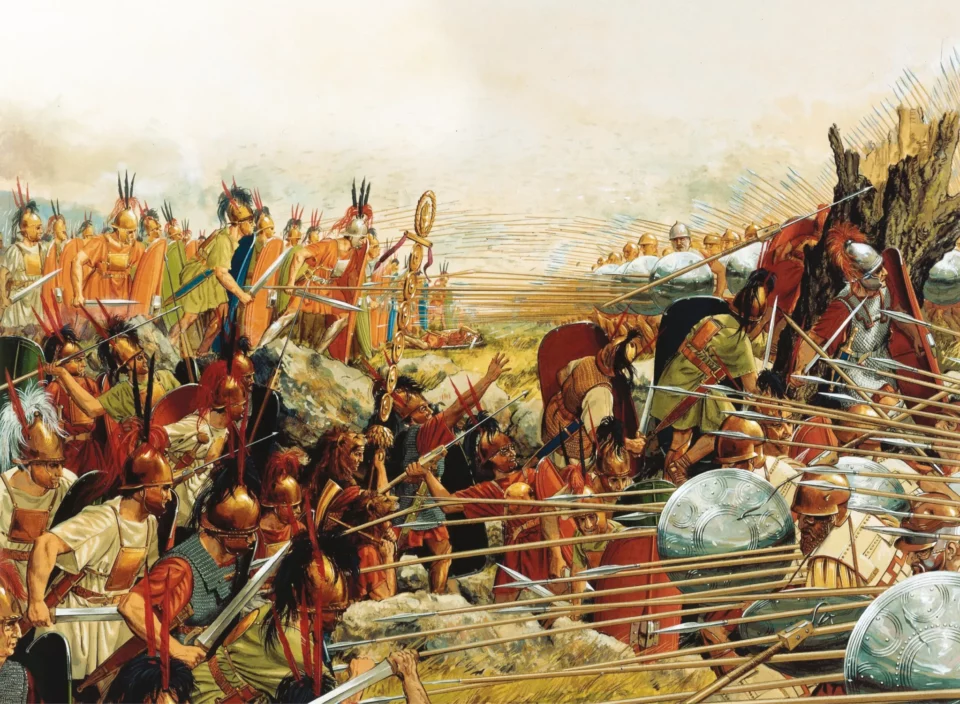Few episodes of the history of ancient Rome capture the spirit of struggle and transformation as vividly as the Conflict of the Orders. Spanning over two centuries, from the early republic in the fifth century BC to its resolution in the late third century BC, this period was characterized by a socio-political confrontation between the patricians and the plebeians. The conflict shaped the republic and influenced the structure of Roman society, law, and governance for centuries to come.
Background: Systemic Injustices
The foundation of the Conflict of the Orders lay in the economic vulnerabilities faced by the plebeians, who constituted the backbone of the Roman army. As these plebeian soldiers embarked on military campaigns vital for Rome’s expansion and security, their absence from farms led to economic downturns and hardships for their families back home. The reliance on patricians for financial aid during military service often subjected plebeians to exploitation and even debt bondage, highlighting systemic inequities and vulnerabilities within Roman society. The growing discontent among plebeians over these systemic injustices and patrician dominance set the stage for the Conflict of the Orders.

The First Plebeian Secession (494 BC)
In response to mounting grievances and the lack of recourse within the existing political framework dominated by patricians, plebeians rallied under visionary leaders such as Lucius Sicinius Vellutus. The watershed moment came in 494 BC during Rome’s conflict with the Italic tribes of the Aequi, Sabines and Volsci. Plebeian soldiers, under the counsel of Vellutus, refused to march against the enemy and seceded en masse to the Mons Sacer (Sacred Mount) outside Rome, effectively leaving the city paralyzed, vulnerable to its enemies, and without the backbone of its army. This bold move, now known as the first secessio plebis or plebeian secession, forced negotiations, leading to a pivotal agreement granting plebeians the right to form their own assembly, the Consilium Plebis (Plebeian Council), and elect plebeian officials known as tribunus plebis (plebeian tribunes) to safeguard their interests.
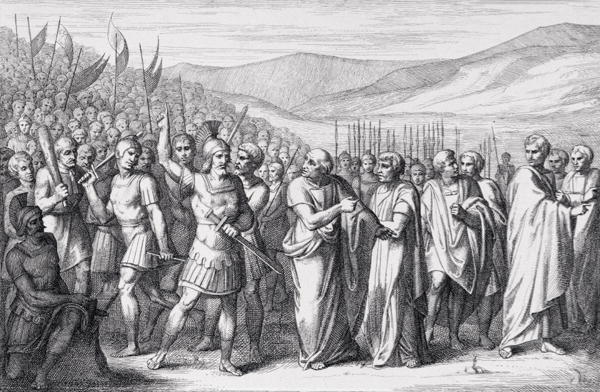
The Plebeian Council became a key institution through which plebeians sought to secure their rights, enact reforms, and participate in the governance of the expanding Roman state. One of the primary functions of the Plebeian Council was its legislative authority through plebiscita (plebiscites), laws enacted by the Council exclusively for plebeians but around 449 BC extended to encompass the entire Roman citizen body. The leadership of the Plebeian Council was entrusted to the plebeian tribunes, who also presided over Council sessions.
Initially, two plebeian tribunes were elected annually by the Plebeian Council, later increasing to ten tribunes to accommodate the growing plebeian population. The first tribunes were Lucius Albinius Paterculus and Gaius Licinius, appointed for the year 493 BC. One of the primary powers of plebeian tribunes was their sacrosanctitas (sacrosanctity), a legal inviolability that shielded them from physical harm or legal repercussions while in office. This protection allowed tribunes to fearlessly challenge patrician magistrates, veto unjust laws (ius intercessionis), and advocate for plebeian rights without fear of retribution, ensuring a vital check on patrician power. The power of veto wielded by plebeian tribunes extended to actions of magistrates, Senate decrees, and legislative proposals deemed detrimental to plebeian welfare. This authority not only protected plebeians from unjust measures but also forced negotiations and compromises between patricians and plebeians, shaping the evolution of Roman law and governance.
The plebeian tribunes were assisted by two aediles plebis (plebeian aediles), who, similar to the tribunes, were elected by the Plebeian Council. Their duties encompassed the maintenance and supervision of public buildings and temples within the plebeian districts, and they were responsible for the organization of public games and festivals, which were not only significant cultural events but also opportunities for political leaders to garner public favor and support. Crucially, the plebeian aediles also had the power to levy fines for public offenses, acting as guardians of public order and morality.

Passing of the First Lex Publilia (471 BC)
The fifth century BC witnessed a series of legislative endeavors and power shifts aimed at addressing plebeian concerns and diluting patrician hegemony. The passage of the first Lex Publilia in 471 BC marked a crucial reform transferring the election of plebeian tribunes to the Comitia Populi Tributa (Tribal Assembly). Prior to the Lex Publilia, the election of tribunes was subject to the influence of patricians, largely due to the organizational structure of the Plebeian Council. The patricians could exert their influence indirectly through their clientes (clients) among the plebeians. Clients were lower-class individuals who depended on a patron (a patrician) for support and protection and, in return, supported their patron’s political interests.
The Tribal Assembly was one of the principal legislative bodies of the Roman Republic, which was organized based on the tribes of Rome, not on the division of patricians and plebeians. By transferring the election of the plebeian tribunes to the Tribal Assembly, the Lex Publilia ensured that the elections would be conducted in a body where the influence of the patricians was significantly diluted, as the assembly was organized geographically rather than by class or patron-client relationships.
Passing of the Leges Valeriae Horatiae (449 BC)
The Leges Valeriae Horatiae, also known as the Valerio-Horation Laws, were a set of laws enacted in 449 BC by the consuls Lucius Valerius Potitus and Marcus Horatius Barbatus. With the passage of these laws, plebiscites were made binding on all Roman citizens, including patricians, but only when the Senate had given its approval after the legislation passed the Plebeian Council. The expansion of plebiscites to cover the entire Roman population was a big step forward for the plebeians, but the Senate’s approval right, which was a de facto veto right, severely limited the amount of plebiscites that would end up binding on both patricians and plebeians.
Passing of the Lex Trebonia (448 BC)
In 448 BC, the Roman Republic witnessed the passage of the Lex Trebonia, a law aimed at curbing the influence of patricians over the plebeian tribunate by prohibiting the practice of co-opting colleagues into vacant tribune positions. This legislative move was designed to thwart patrician attempts to control the tribunate by pressuring tribunes into selecting colleagues who were either sympathetic to the aristocracy or directly drawn from their ranks.
The immediate backdrop to the Lex Trebonia involves the establishment of the Decemvirate, a commission of ten officials (decemviri) created in 451 BC. This body was tasked with codifying and reforming Roman law, ostensibly to address long-standing grievances of the plebeian class and to create a fairer legal system. The commission was inspired in part by a study of Greek laws, with Roman envoys sent to gather information on Greek legal systems. The decemviri produced the Twelve Tables, which formed the foundation of Roman law. However, the process was marred by controversy and power struggles.
The first committee of decemviri, working in 451 BC, completed ten tables of laws. Due to incomplete work, a second committee was appointed for 450 BC. Appius Claudius Crassus, a key figure in the first committee, ensured his continuation into the second committee, selecting like-minded individuals who could be easily influenced by him. The new laws they drafted, completing the Twelve Tables, were seen as harsh towards plebeians and included prohibitions against the intermarriage of patricians and plebeians.
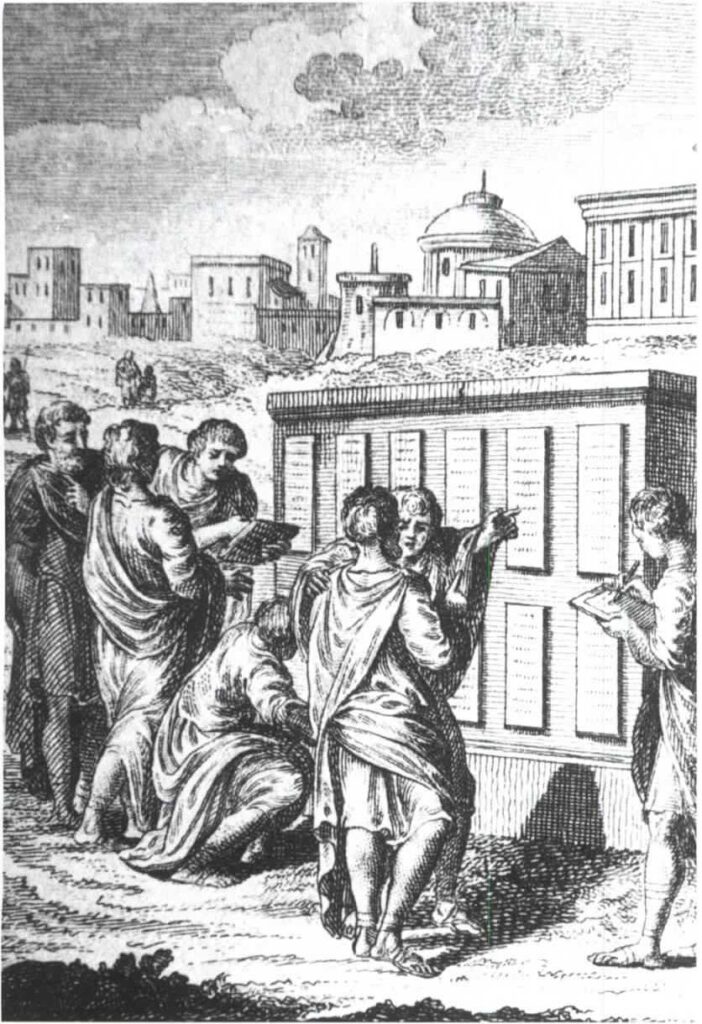
The decemviri, particularly under the leadership of Appius Claudius, overstepped their mandate by refusing to step down after their term ended, effectively seizing control of the state. This action, combined with the oppressive nature of some of the new laws and allegations of corruption and abuse of power, led to widespread public dissatisfaction. This discontent culminated in the overthrow of the Decemvirate. The plebeians, rallying under their tribunes, restored the consular government and implemented laws that enshrined the right of appeal and the continuity of the tribunate, reinforcing the checks against patrician dominance.
In the wake of these events, the plebeian tribunes sought reelection. Concerns arose that this mirrored the decemviri’s attempts to perpetuate their power. During the election presided over by Marcus Duilius, a decision was made not to include the names of those seeking reelection, leading to only half the required number of tribunes being elected. To fill the vacancies, Duilius directed the elected tribunes to co-opt colleagues, but this process was manipulated by patrician interests, leading to the selection of patricians as tribune candidates.
In response to these manipulations and to prevent a recurrence of patrician interference in the election of plebeian tribunes, Lucius Trebonius proposed the Lex Trebonia. This law explicitly forbade the co-optation of tribunes, insisting instead that elections continue until all tribune positions were filled by popular vote, thus ensuring a more democratic and less patrician-influenced election process. Trebonius’s efforts to enforce this law during his tenure earned him the nickname Asper (annoying), highlighting his resolve against patrician encroachments.
Struggle for Consular Rights and Passing of the Lex Canuleia (445 BC)
The quest for political parity reached a zenith in 445 BC when the plebeians, long excluded from the highest offices of the Roman state, demanded the right to stand for election as consul. This was a radical proposal given the traditional patrician monopoly on the consulship, an office that not only held supreme civil and military authority (imperium) but also symbolized the pinnacle of Roman political and social achievement. The plebeians argued that, as citizens of Rome, they should be eligible to serve in its highest office, reflecting their contributions to Rome’s military and economic strength.
The Senate, dominated by patricians, refused the plebeian demand. The patricians were concerned that opening the consulship to plebeians would erode their social and political privileges and potentially alter the balance of power within the republic. The consulship was more than just a political office, it was a symbol of patrician authority and a guardian of Rome’s religious and social traditions.
The compromise reached was a creative solution to a seemingly intractable problem. While the consulship remained closed to plebeians, a new office was created: the military tribune with consular powers (tribuni militum consulari potestate), also known as the consular tribune. This position granted its holders consular imperium, effectively allowing them to perform many of the same functions as consuls, but without altering the traditional eligibility criteria for the consulship itself. These consular tribunes were elected by the Comitia Centuriata (Centuriate Assembly), an electoral body organized by wealth and military class, which theoretically included plebeians but was structured in a way that gave greater influence to the wealthier citizens. The Senate retained the power to veto any election, which provided a check against individuals deemed unacceptable by the patrician class.
After the creation of the role of consular tribunes, Rome alternated between electing consuls and consular tribunes in subsequent years, depending on the political climate, military needs, and the balance of power between patricians and plebeians at the time, with consular tribunes being more likely elected in years when there was a push for greater plebeian representation or during times of military crisis that demanded a more flexible command structure.
In the same year the Lex Canuleia was introduced. This law legalized marriage (connubium) between patricians and plebeians, allowing their offspring to be considered legitimate citizens with full rights. Prior to the Lex Canuleia, marriages between members of these two classes were not legally recognized, which served to maintain the social and political dominance of the patrician class over the plebeians.
Passing of the Lex Licinia Sextia (367 BC)
The period around 400 BC in Rome was marked by significant military campaigns and social upheaval, setting the stage for transformative legal and political reforms. Rome found itself engaged in a series of protracted conflicts with neighboring tribes, including the Aequi, the Volsci, the Latins, and the Veii. These wars were not only significant in terms of territorial expansion and defense but also had profound internal consequences, particularly affecting the social dynamics between the patrician aristocracy and the plebeian class.

Over time, the continuous cycle of warfare and the unequal distribution of rewards led to increasing restlessness and bitterness among the plebeian soldiers. Exhausted by the demands of military service and disillusioned by the lack of equitable compensation, the plebeians began to demand substantive reforms to address their economic plight and political marginalization.
Responding to these pressures, in 367 BC, the tribunes Gaius Licinius Stolo and Lucius Sextius Lateranus introduced a groundbreaking piece of legislation known as the Lex Licinia Sextia. This law was multifaceted, aiming to alleviate the economic hardships of the plebeians and to address their demands for greater political representation. One of the key provisions of the Lex Licinia Sextia was the debt relief for plebeians, addressing immediate economic concerns exacerbated by years of warfare. However, the law also included a revolutionary political reform: it mandated that at least one of the consuls elected each year be a plebeian.
The concession to allow plebeians into the consulship was a pivotal moment in Roman history, marking a significant step towards leveling the political playing field between the patricians and plebeians. However, this change also led to adjustments in the Roman political structure. In 366 BC, possibly as a compensatory measure to maintain patrician influence in the state, two new offices were created: the praetorship and the curule aedileship. The praetorship was a significant magistracy in the Roman Republic, second only to the consulship in terms of prestige and authority. Praetors were elected by the Centuriate Assembly, and candidates were required to have previously served as quaestors (another lower-ranking magistracy). The office initially served to alleviate the judicial responsibilities of the consuls, allowing them to focus more on administrative and military duties. Over time, the role and number of praetors expanded to meet the needs of Rome’s growing empire. The curule aediles shared many of the same responsibilities as their plebeian counterparts (the plebeian aediles) but also had additional duties and privileges, including the organization of more prestigious games and public festivals, which often required significant personal expenditure, a higher level of involvement in the city’s infrastructure and public works, and the right to sit on a curule chair (sella curulis), symbolizing their authority, and to wear the toga praetexta, a symbo of their elevated status.
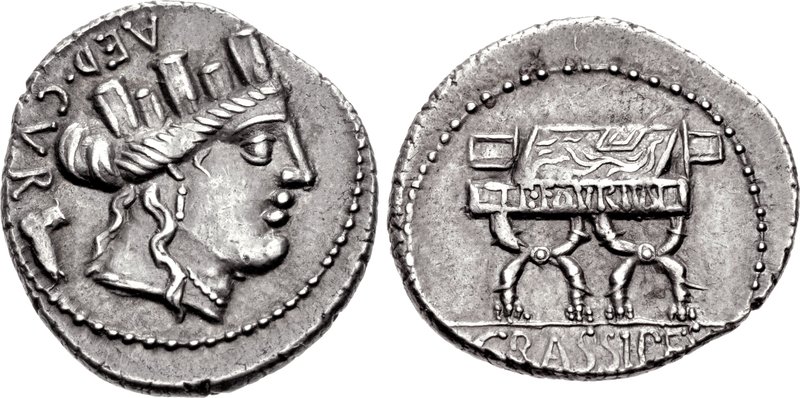
While these new offices were designed to handle judicial and administrative duties, thereby reducing some of the consuls’ workload, they were initially open only to patricians. The creation of the praetorship and curule aedileship allowed the patricians to retain significant control over key aspects of Roman governance, even as the plebeians began to break into the consulship. However, at some point after the passing of the Lex Licinia Sextia an agreement was reached that allowed plebeians to hold the curule aedileship every other year. Eventually, this alternating arrangement was abandoned, and plebeians won full admission to the office. As plebeians gained access to the consulship and the curule aedileship, the momentum for further inclusion continued to build. The first plebeian praetor, Quintus Publilius Philo, was elected in 337 BC, the same year eligibility for the praetorship was opened to the plebeians.
Because of the eligibility of plebeians for the office of consul, the election of consular tribunes became increasingly rare, and the traditional consulship, now accessible to both patricians and plebeians, reasserted itself as the central executive authority in Rome. The last known election of consular tribunes occurred in 367 BC, the same year the Lex Licinia Sextia was passed, marking the end of the consular tribunate as a significant institution in Roman politics.
The First Plebeian Dictator and Censor (356-351 BC)
As the consulship was opened to plebeians in 367 BC, they gained a de facto right to hold other major offices such as the dictatorship and censorship, since these were typically held by former consuls. This change allowed for one plebeian man to cement his place in Roman history.
Gaius Marcius Rutilus’ election as the first plebeian dictator in 356 BC was a landmark event. The role of dictator in Rome was an extraordinary position, appointed during times of emergency and granted absolute authority for a limited period, traditionally six months. Before Rutilus, this office had been strictly limited to patricians.
Rutilus further cemented his place in Roman history by becoming the first plebeian censor, an office he held in 351 BC. The censors were powerful officials responsible for maintaining the census, overseeing public morals, and supervising the financial affairs of the state, including the leasing of public lands and contracting for public works. Around the year 312 BC, censors obtained the authority to add or remove citizens from the senatorial rolls, making this office one of immense power and prestige.
Passing of the Second Lex Publilia (339 BC)
The second Lex Publilia, proposed by Quintus Publilius Philo in 339 BC, marked another pivotal advancement in the plebeians’ quest for political equality. The Lex Publilia modified the application of the auctoritas patrum by stipulating that instead of giving its approval after the legislation was passed by an assembly, the Senate’s ratification was to be sought before the legislative proposal was put to a vote in the assembly. Translated as “the authority of the fathers” or “the approval of the patricians,” the auctoritas patrum refers to a specific constitutional mechanism whereby the Roman Senate had the power to either approve or reject legislation that had been passed by the popular assemblies, including the Plebeian Council. This change aimed to streamline the legislative process and possibly reduce the Senate’s capacity to block plebeian legislation, though it still maintained a role for the Senate in the legislative process, potentially as a form of compromise between maintaining senatorial authority and acknowledging plebeian demands for greater legislative autonomy.
Furthermore, the law mandated that at least one of the two censors, elected every five years, had to be a plebeian, breaking the patrician stranglehold on this influential office and granting the plebeian class a substantial new avenue of influence within the state.
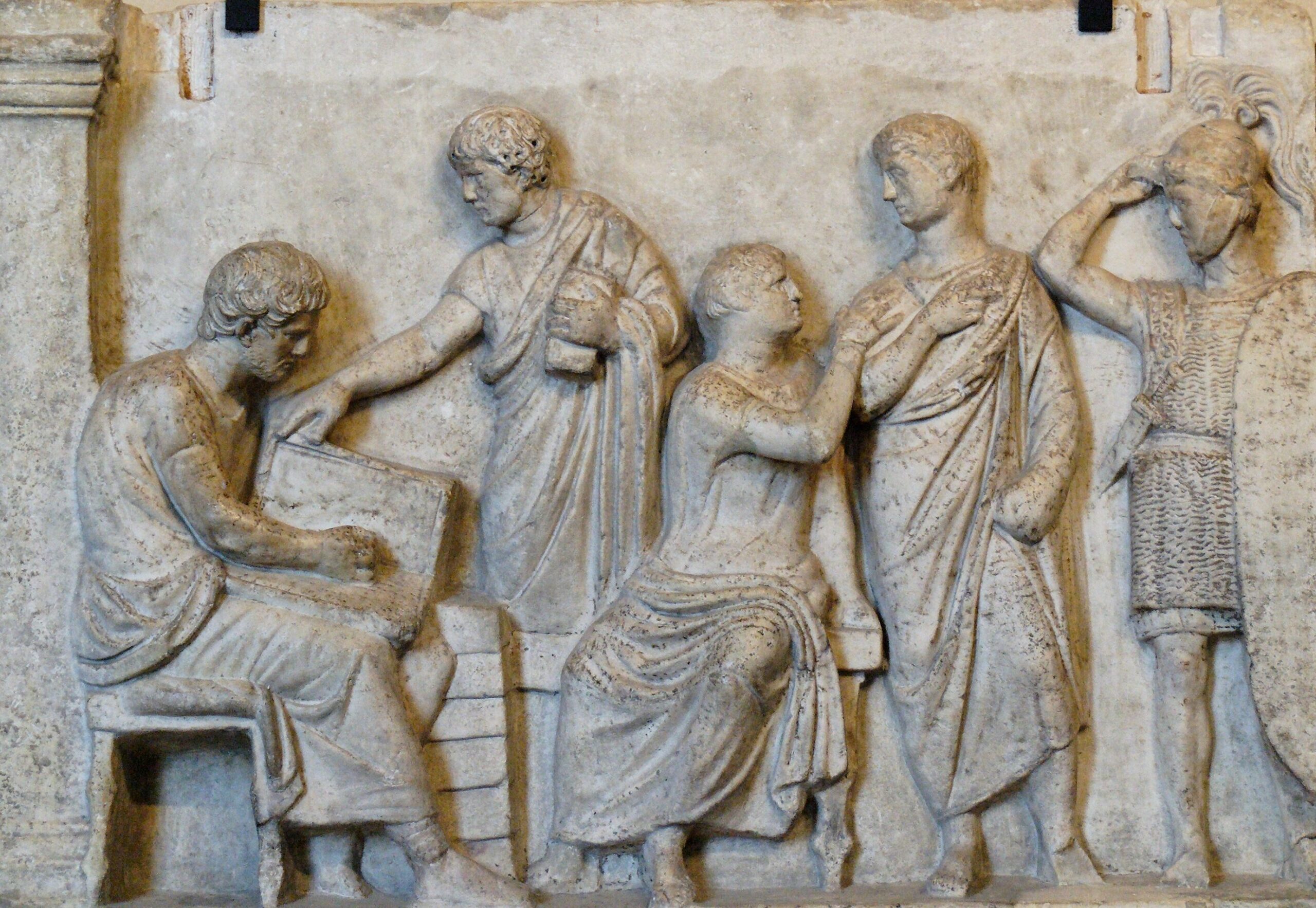
Passing of the Lex Ovinia (c. 312 BC)
The Plebiscitum Ovinium, also known as the Lex Ovinia, was enacted around the year 312 BC, though the exact date of its passage is uncertain. Prior to this plebiscite, the consuls, still mostly patricians, had the authority to appoint new senators, which naturally perpetuated the dominance of the patrician class within this governing body. The Plebiscitum Ovinium transferred the power of selecting senators from the consuls to the censors.
Censors were now responsible for reviewing the list of current senators (lectio senatus) at the beginning of their term and could remove senators who were deemed unworthy due to misconduct or who failed to meet the property qualifications. They also added new members to the Senate, usually from the ranks of former magistrates, thereby potentially opening up the Senate to a broader segment of Roman society. Although the censors could be of either patrician or plebeian class, the reform facilitated greater plebeian representation within the Senate over time. As more plebeians held magistracies, including the censorship, the likelihood of plebeians entering the Senate increased.
Ending of the Conflict and Passing of the Lex Hortensia (287 BC)
The Lex Hortensia, enacted in 287 BC, marked the definitive end to the Conflict of the Orders. Proposed by the plebeian dictator Quintus Hortensius, the Lex Hortensia removed the requirement for Senate approval (auctoritas patrum) of plebiscites, making them immediately binding on all citizens upon passage. This effectively elevated the Plebeian Council to a position of legislative parity with the other Roman assemblies, such as the Centuriate Assembly. The Lex Hortensia also reaffirmed the principle that plebiscites have the full force of law over both patricians and plebeians, which it had originally acquired as early as 449 BC as part of the Leges Valeriae Horatiae.
The passage of the Lex Hortensia had far-reaching implications for Roman society. It signaled the end of the patricians’ monopoly on political power and acknowledged the plebeians as equal participants in the governance of the republic. This democratization of the political process contributed to Rome’s stability and adaptability, allowing it to manage its vast territories and diverse populations more effectively. The end of the Conflict of the Orders also had a profound impact on the Roman military. With plebeians now eligible for high office, their role in Rome’s military campaigns and leadership became even more crucial, enhancing Rome’s capacity for expansion and conquest.
Conclusion: Saga of Struggle, Resilience, and Transformation
The Conflict of the Orders ultimately culminated in a society far more inclusive than at its inception. The plebeians, initially marginalized and excluded from the political process, gradually secured rights and privileges that brought them closer to parity with the patricians. However, the journey to this point was neither linear nor without its setbacks. Each step forward was hard-won, often through compromise and the relentless pursuit of justice by the plebeian class. The creation of the plebeian tribunes, the establishment of laws allowing intermarriage between classes, and the gradual opening of high offices to plebeians each represented a thread in the larger tapestry of Roman democratic evolution.
The legacy of the Conflict of the Orders is multifaceted. It underscores the capacity for societal evolution within the framework of an established republic, highlighting how sustained advocacy and political engagement can lead to substantive changes in governance. Moreover, it illustrates the complexities of power distribution, the quest for social justice, and the inherent tensions in balancing tradition with progress. In the annals of history, the Roman Conflict of the Orders stands not just as a testament to the republic’s capacity for adaptation and reform, but also as a beacon, illuminating the possibilities for progress when a society is willing to confront its inequalities and strive toward a more equitable distribution of power.


